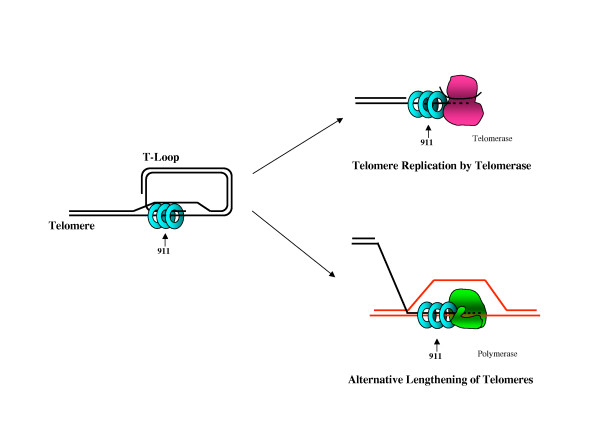Figure 1.
Models for the function of the 911 complex at telomeres. During most of the cell cycle, telomeres are believed to be folded into T-loop structures in which the 3' single-stranded overhang is tucked back into the adjacent double-stranded DNA, forming a D-loop. 911 is localized to telomeres in both quiescent and replicating cells, suggesting that it associates with T-loop structures. The precise DNA structure necessary for 911 loading at telomeres is unknown. In vitro studies suggest preferential loading of the 911 complex onto 5' recessed DNA ends, but loading onto 3' recessed DNA ends is observed under some conditions. The telomere shortening observed in 911-deficient cells as well as additional data implicate 911 in telomere replication mechanisms, including telomerase-based and alternative lengthening of telomeres (ALT) recombinational mechanisms. The speculative models shown illustrate direct interactions between 911 and telomerase or DNA polymerase, but the precise molecular function of 911 in these processes remains to be determined (see text for details).

